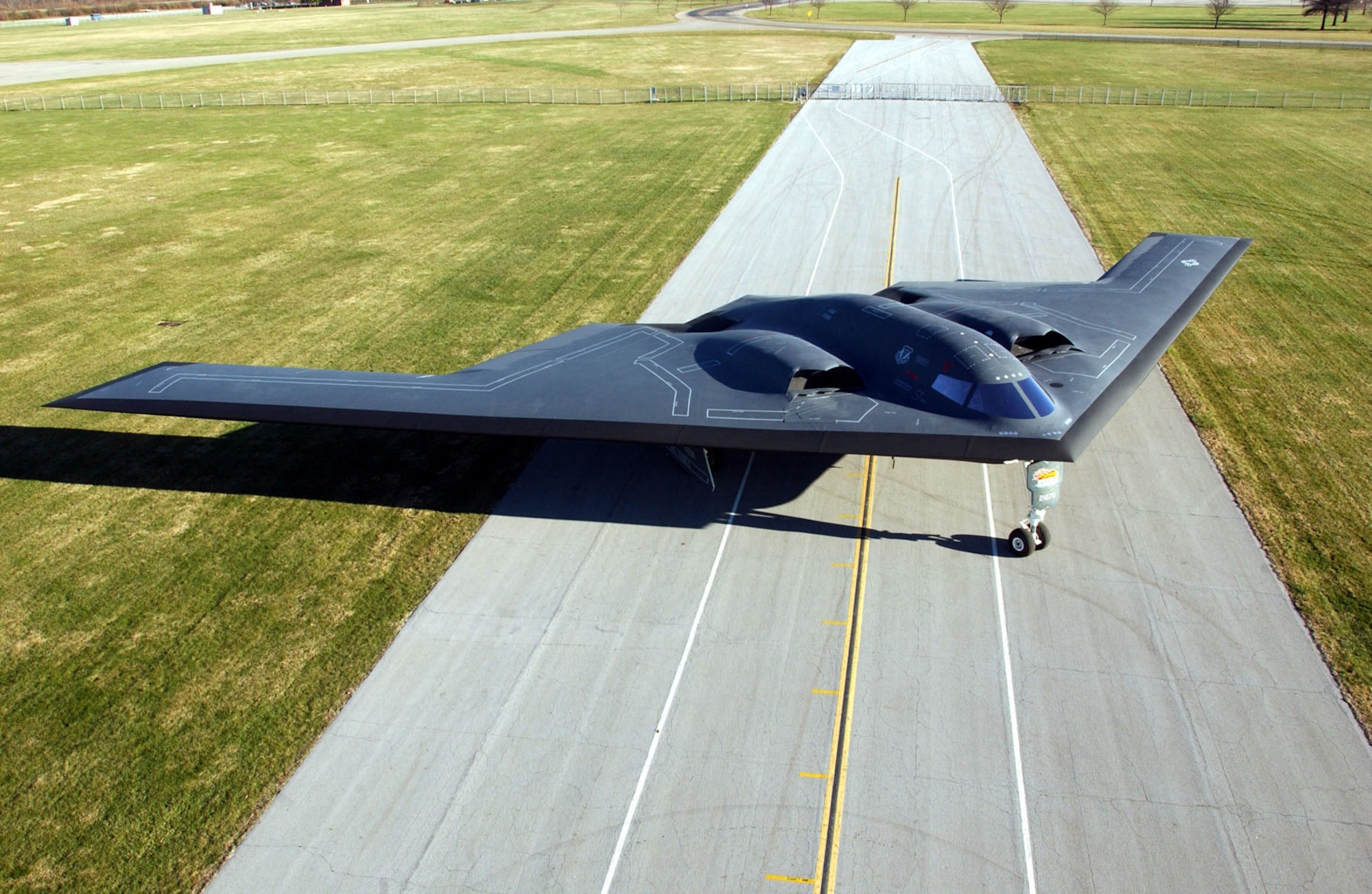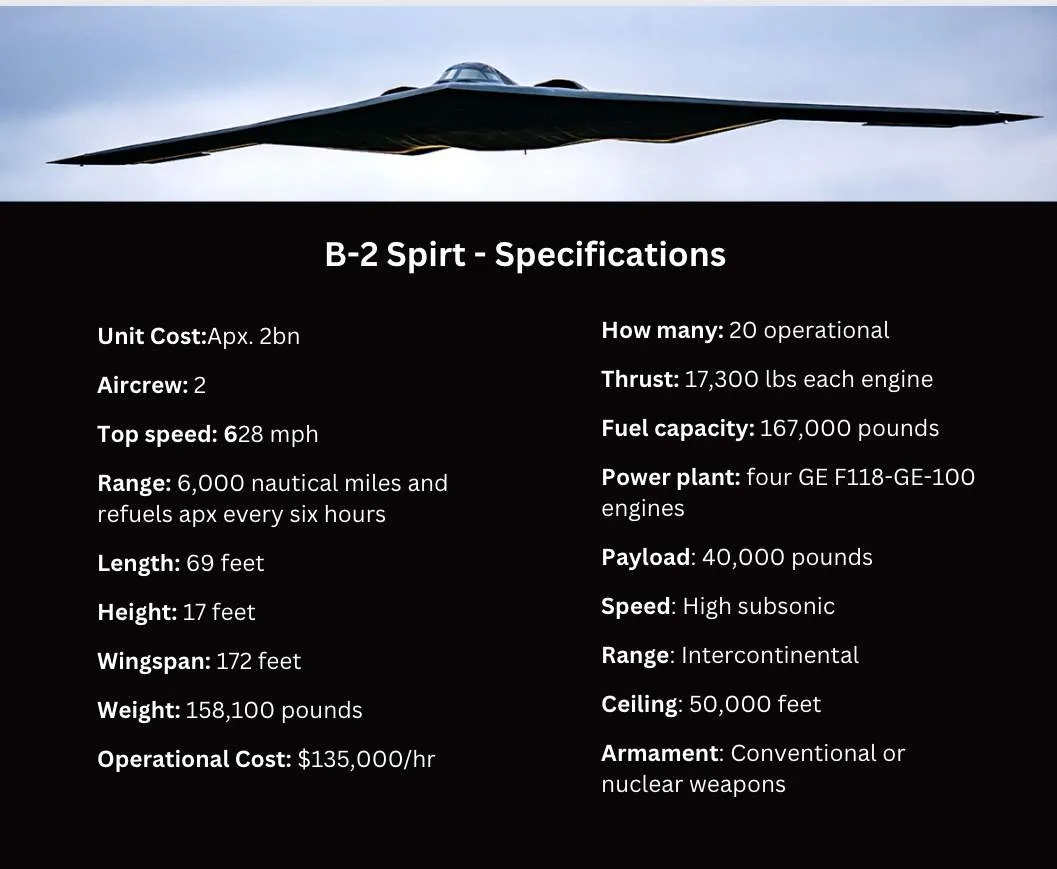The B-2 Spirit: A Marvel of Stealth and Strategic Power
Introduction
In the ever-evolving landscape of modern military aviation, few aircraft have captured the world’s attention quite like the Northrop Grumman B-2 Spirit. This cutting-edge strategic bomber, developed during the Cold War and unveiled to the public in the late 1980s, remains one of the most iconic and secretive aircraft ever produced. The B-2 represents the epitome of stealth, innovation, and air dominance, capable of delivering precision strikes anywhere in the world without being detected. It serves as a critical component of the United States’ long-range strike arsenal, capable of deploying both conventional and nuclear payloads with lethal precision. Beyond its technological prowess, the B-2 symbolizes the military-industrial complex’s capabilities, combining aerospace innovation, strategic planning, and geopolitical influence.
Origins and Development
The story of the B-2 Spirit begins in the height of the Cold War era, during a period when the United States faced mounting concerns over the increasing effectiveness of Soviet air defense systems. Recognizing the need for a next-generation bomber that could evade radar detection and reach deep into enemy territory, the U.S. Air Force initiated the Advanced Technology Bomber (ATB) program. In 1981, Northrop, known for its expertise in unconventional aircraft design, won the contract to build what would become the B-2.
Northrop’s design was heavily influenced by earlier experimental aircraft, including the YB-35 and YB-49 flying wing bombers developed in the 1940s. These prototypes offered promising aerodynamic and stealth advantages, though the technology of the time was not advanced enough to bring them to fruition. By the 1980s, breakthroughs in materials science, computing, and avionics made it possible to revisit the flying wing concept and bring it into operational reality.
The B-2’s development was marked by secrecy and controversy. Initially, the project was classified, and details of the bomber’s existence were concealed from the public and many government officials. When the aircraft was finally revealed in 1988, it generated awe and skepticism alike, especially after the staggering costs associated with its development became public. Originally, over 100 units were planned, but the program was curtailed due to the end of the Cold War and mounting budget constraints, resulting in only 21 operational units being built.
Stealth Technology
The cornerstone of the B-2 Spirit’s effectiveness lies in its revolutionary stealth technology. The aircraft was designed from the ground up to avoid detection by radar, infrared, acoustic, and even visual tracking systems. Its unique flying wing shape is inherently radar-evading, as it minimizes the aircraft’s radar cross-section. The absence of vertical surfaces, such as a tail fin, eliminates common sources of radar reflection.
A key element of the B-2’s stealth is its use of radar-absorbent materials (RAM) and specialized surface coatings. These materials absorb incoming radar waves rather than reflecting them, significantly reducing the chance of detection. The aircraft’s engine intakes are buried within the wing and shaped to minimize radar and infrared emissions. Even the engine exhausts are cooled and diffused to minimize the aircraft’s infrared signature.
Additionally, the B-2’s exhaust systems are integrated into the upper surface of the wing, helping shield them from infrared sensors on the ground. The aircraft also includes a sophisticated electronic countermeasures system that can jam enemy radar and mislead surface-to-air missile systems.
Design and Features
The B-2’s flying wing design is not only crucial for stealth but also contributes to its aerodynamic efficiency and reduced drag. With a wingspan of 172 feet (52.4 meters) and a length of 69 feet (21 meters), the B-2 has an unmistakable silhouette. Despite its size, the aircraft is incredibly maneuverable for a strategic bomber, capable of flying at high subsonic speeds and operating at altitudes up to 50,000 feet.
Key features of the B-2 Spirit include:
- Quadruple-Redundant Fly-by-Wire System: Provides precise control and stability, essential for an aircraft without a traditional tail.
- Advanced Avionics Suite: Integrates navigation, communication, and targeting systems, enabling global missions with pinpoint accuracy.
- Composite Materials: Reduce weight and contribute to the low radar signature.
- Pressurized Crew Compartment: Supports long-duration flights of over 40 hours, with onboard facilities for pilot rest.
- Modular Weapon Bays: Allow for flexible mission configurations and rapid armament changes depending on the objective.
Armament and Payload
The B-2 Spirit is capable of carrying a versatile and formidable array of weaponry, making it a linchpin in both conventional and nuclear missions. With two internal weapons bays, the aircraft can carry up to 40,000 pounds (18,000 kg) of ordnance while maintaining its stealth profile.
Conventional Weapons:
- JDAM (Joint Direct Attack Munition): GPS-guided bombs capable of hitting targets with high accuracy in all weather conditions.
- GBU-57 Massive Ordnance Penetrator: A bunker-busting bomb designed to destroy deeply buried targets.
- Mk 82 and Mk 84 bombs: Versatile general-purpose bombs.
- GBU-31 and GBU-38: Part of the JDAM family, used for tactical strikes on enemy infrastructure.
Nuclear Weapons:
- B61 and B83 nuclear bombs: Strategic bombs capable of delivering high-yield detonations.
The B-2’s precision targeting systems and ability to fly undetected into heavily defended airspace allow it to neutralize high-value targets with minimal collateral damage. Its payload versatility ensures readiness for a wide range of mission types, from tactical battlefield support to strategic deterrence.
Performance and Capabilities
- Top Speed: Approximately 628 mph (1,010 km/h), just below the speed of sound.
- Range: More than 6,000 nautical miles (11,000 km) unrefueled, extendable with aerial refueling.
- Operational Ceiling: Up to 50,000 feet (15,000 meters).
Thanks to aerial refueling, the B-2 Spirit has global reach capabilities. Missions lasting over 40 hours have been conducted, with bombers flying directly from bases in Missouri to the Middle East and back. This level of reach provides unmatched flexibility and surprise, allowing U.S. forces to strike with precision at any location on the planet.
Operational History
Since its introduction into active service in 1997, the B-2 Spirit has seen action in several major conflicts and operations:
- Kosovo War (1999): Played a pivotal role in Operation Allied Force, delivering precision strikes from bases in the U.S. without needing to land in Europe.
- Iraq War (2003): Participated in the opening salvo of Operation Iraqi Freedom, demonstrating its ability to strike strategic targets with minimal warning.
- War in Afghanistan (2001–Present): Used in early strikes against Taliban and al-Qaeda forces.
- Libya Intervention (2011): Destroyed key military assets during NATO’s Operation Odyssey Dawn.
Its first combat mission involved a 30-hour round-trip from Whiteman Air Force Base in Missouri to Kosovo and back, striking multiple targets with near-perfect accuracy. This mission alone showcased the aircraft’s global strike capabilities and operational endurance.
Strategic Importance
The B-2 Spirit remains a critical component of America’s nuclear triad and global power projection capabilities. Its ability to evade detection and deliver devastating payloads ensures it plays a key role in deterring potential adversaries. In addition to its strategic nuclear role, the B-2 is often employed in the early stages of conflict, clearing a path for other forces by disabling enemy radar and command centers.
From a geopolitical perspective, the B-2 serves as a tool of strategic signaling. The mere deployment of a B-2 to a regional hotspot can influence diplomatic negotiations and deter aggression. Its presence is not only a show of force but also a subtle reminder of the technological gap between the United States and its potential adversaries.
Modernization and Future Prospects
To maintain its edge in modern warfare, the B-2 fleet has undergone extensive upgrades. These enhancements ensure the bomber remains effective against emerging threats, including advanced air defense systems and electronic warfare.
Notable upgrades include:
- Defensive Management System Modernization (DMS-M): Upgrades the bomber’s threat detection and countermeasure systems.
- Communications Suite Enhancements: Improved satellite communications and data link capabilities.
- Next-Gen Munitions Integration: Compatibility with emerging smart weapons and hypersonic payloads.
The B-21 Raider, currently in development by Northrop Grumman, is intended to eventually replace the B-2. However, due to the unique capabilities of the B-2, it is expected to remain in service well into the 2030s, if not beyond.
Cost, Criticism, and Legacy
The B-2 Spirit’s staggering cost has been a source of intense debate. With a unit cost exceeding $2 billion (including R&D), the aircraft is one of the most expensive ever built. This high price led to a sharply reduced production run, with only 21 units built—one of which was lost in a non-combat crash.
Critics argue that the program’s costs were unjustifiable, especially given the reduced threat landscape following the end of the Cold War. Others contend that the B-2’s unparalleled capabilities in stealth, payload, and reach more than justify the investment, especially in an era where asymmetrical and long-range threats are growing.
Despite the controversy, the B-2 has proven to be an invaluable asset in both combat and deterrence. It has shaped the development of stealth technologies and influenced the design of subsequent aircraft across the globe.
Conclusion
The Northrop Grumman B-2 Spirit stands as one of the most advanced and enigmatic military aircraft ever created. It blends stealth, range, and precision in a way no other bomber can, offering unmatched capabilities in global strike and deterrence. More than three decades after its first flight, the B-2 remains a vital asset to U.S. national defense, capable of operating in the most hostile environments and delivering devastating results with pinpoint accuracy.
As we look toward the future of air warfare and strategic deterrence, the legacy of the B-2 will remain influential. Its impact on aerospace design, military strategy, and technological innovation cements its place in history not just as a machine of war, but as a symbol of what is possible when ambition, science, and necessity converge.
(Click notification ![]() for more updates)
for more updates)
By: V.Harishram
”Stay true, bring facts to you”




[…] six GBU‑57A/B MOP bombs, each weighing around 30,000 lb, delivered by B‑2 stealth bombers (click here for more about B-2) refueled in-flight after a nearly 30-hour round-trip from Whiteman AFB, Missouri, via […]